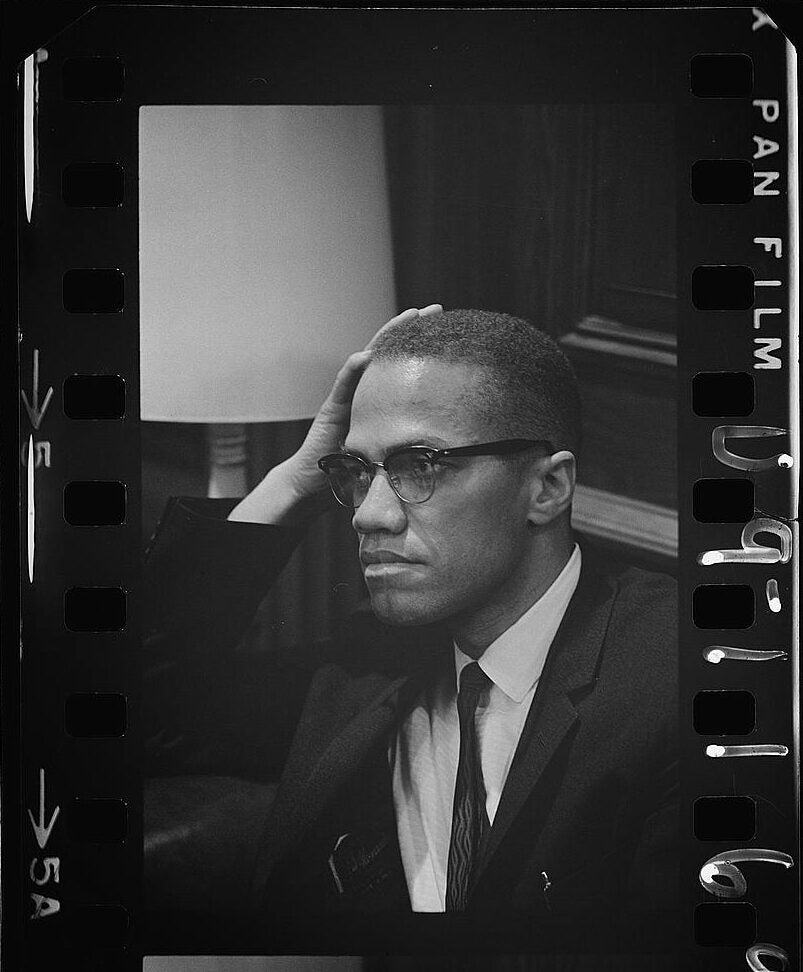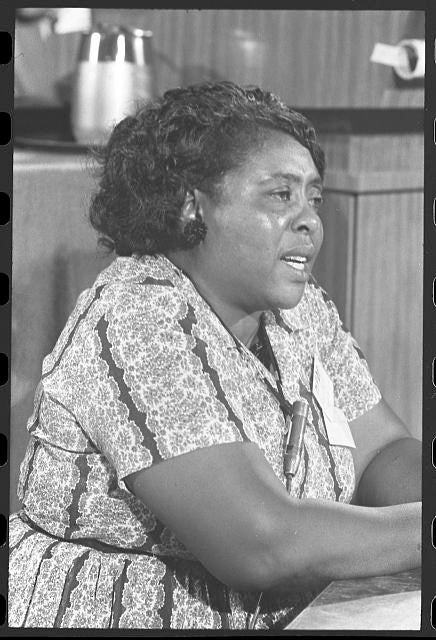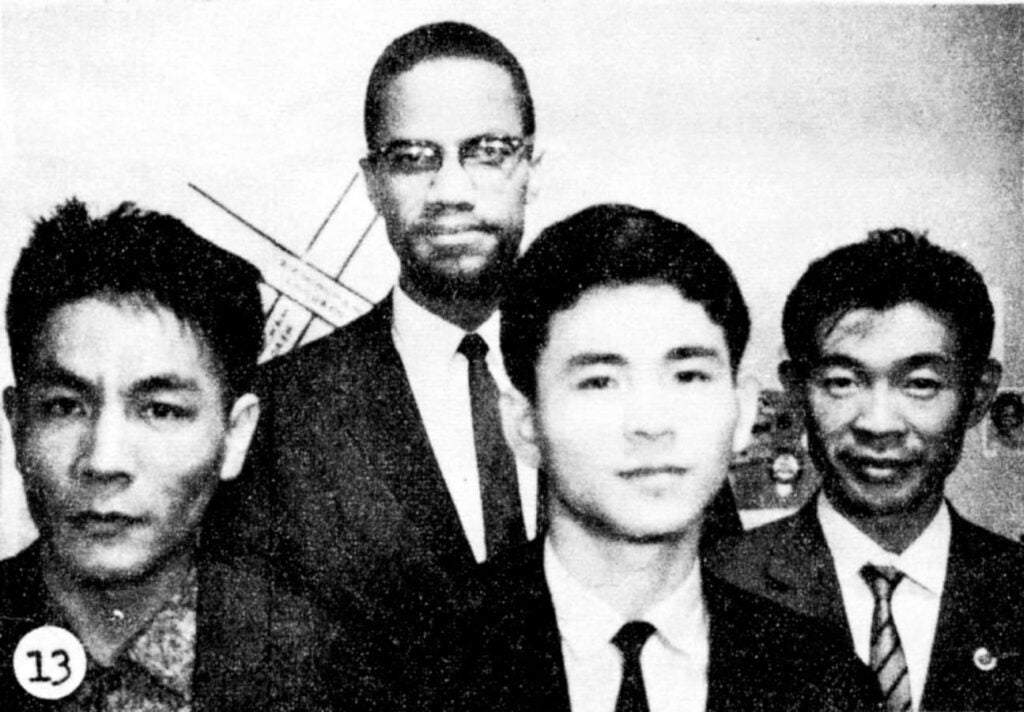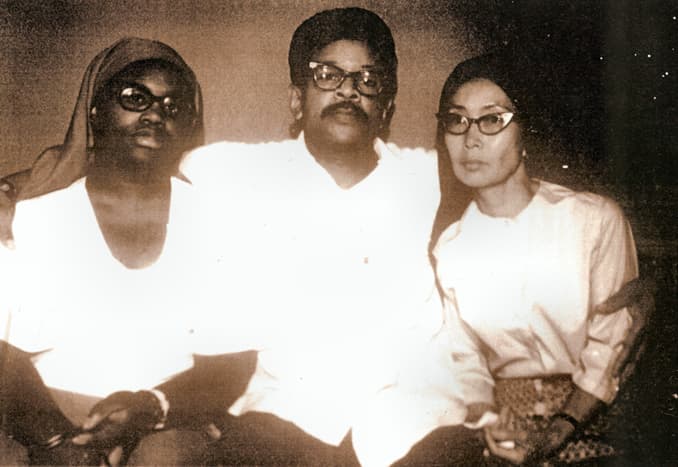
Malcolm X pan film negative. Photo Credits

Malcolm X pan film negative. Photo Credits
In October 1963, Yuri met the person who would transform her life, Malcolm X. When she walked up to him, she surprised herself by speaking so candidly. She said, “I admire the kinds of things you’re saying, but I don’t agree with you about something…Your harsh stance on integration.”
Malcolm X’s response was not harsh or dismissive, but instead he invited her to attend his newly formed Organization of Afro-American Unity’s Liberation School every Saturday morning.
What Yuri learned at the OAAU Liberation School profoundly shaped her thinking about racism.
One day, she heard a recording of Fannie Lou Hamer, the renowned leader of the Southern voting rights struggles, describing the life of poverty that she and other poor Black people experienced in Mississippi.
It was especially disturbing to hear Hamer, who like Yuri was a middle-aged mother, describe how White prison guards pressured two Black male prisoners to viciously beat her while she was in jail.
Yuri’s ideas were changing quickly. She was no longer seeing racism as individual attitudes and bigotry, but instead as a structural problem, as embedded in the very institutions and history of society.

Fannie Lou Hamer. Photo Credits

Fannie Lou Hamer. Photo Credits

Malcolm X meeting with Japanese journalists at the Kochiyama home, June 6, 1964. (From left) Ryuji Hamai (writer), Nobuya Tsuchida (interpreter), and Akira Mitsui (reporter) — delegates of the Hiroshima-Nagasaki World Peace Study Mission. Photograph from family newsletter Christmas Cheer, Volume 15 (1964), p. 6. Photo Credit: Yuri Kochiyama

Malcolm X with Audee and three other teens on June 6, 1964 at the Kochiyama home. Photo Credit: Yuri Kochiyama
At Yuri’s invitation, Malcolm X came to the Kochiyama’s home to meet Japanese Hibakusha (atomic bomb survivors) and journalists traveling on a world peace tour. The meeting was held at the Kochiyama home in Harlem, on June 6, 1964.
While traveling in Africa, the Middle East, and Europe in 1964, Malcolm X sent the Kochiyamas eleven postcards. This one is postmarked from Cairo.

Postcard from Malcolm X (Ciaro). Photo Credits
Yuri and her oldest son were in the audience at Harlem’s Audubon Ballroom in February 1965, when Malcolm X was assassinated. A photograph in Life magazine shows Yuri offering comfort to the slain leader, yet there is no mention of her by name or any acknowledgement of an Asian American presence at Malcolm’s talk.
The Life magazine photo is the only known image of Yuri and Malcolm together. But in later years, especially after Yuri’s passing in 2014, artists and activists would create numerous posters, murals, and images jointly featuring Yuri and Malcolm.
Image missing. Mural of Yuri and Malcolm together?

Top: “From Harlem With Love” is located on the corner of 125th Street and Old Broadway, a block from where Yuri lived at the Manhattanville Houses from 1960 to 1999. Photo Credits

Bottom: Amanda Phingbodhipakkiya’s Raise Your Voice mural of Yuri and Malcolm, at the Museum of the City of New York, 2022. Photo Credits

Organization of African American Unity at a rally commemorating the life of Malcolm X, Harlem (circa 1965) Photo Credit: Yuri Kochiyama
Following the assassination of Malcolm X, a number of Black organizations formed to carry forward Malcolm’s vision for Black liberation. Having been associated with Malcolm’s people at the OAAU, Yuri was soon working with the most militant Black nationalist organizations in Harlem, including the Republic of New Africa.
Organization of African American Unity at a rally commemorating the life of Malcolm X, Harlem (circa 1965) Photo Credits

Yuri Kochiyama speaking. Photo Credits
Yuri speaking at a commemoration of Malcolm X’s birthday at Malcolm’s gravesite in New York, early 1970s.
In the 1960s, the police and FBI intensified their surveillance of Black activists. Yuri’s friends and fellow activists were targeted and arrested, often because their activism challenged the established order. Yuri immersed herself in the political prisoner movement. She constantly wrote letters to prisoners, visited people in prison, and helped to organize campaigns for their release.
Yuri came to be regarded as a central person in the struggle to free and support political prisoners.
Her own experiences with wartime incarceration experiences, and the injustices involved, fueled her work.

Safiya Bukhari (left) was one of the political prisoners who Yuri supported. In the early 1970s, Yuri became Sunni Muslim and studied and worshipped with Imam Rasul Suliman (center) at the Sankore Mosque in Greenhaven prison, in New York. Photo Credits






